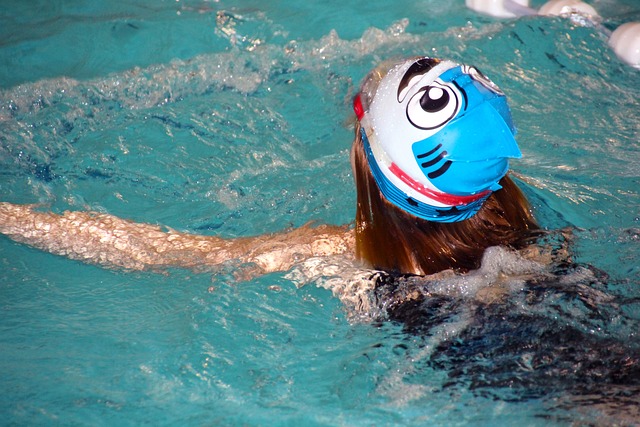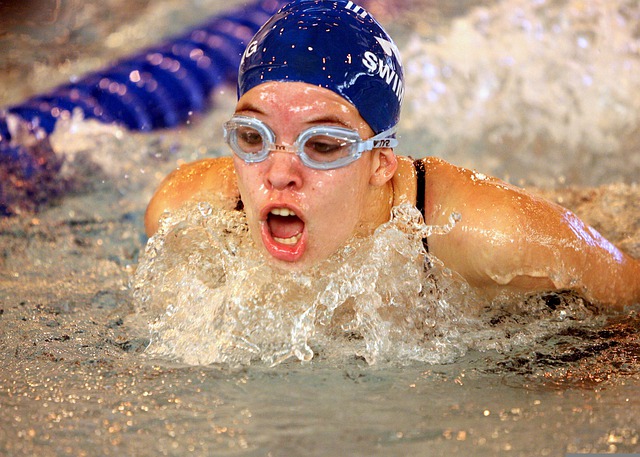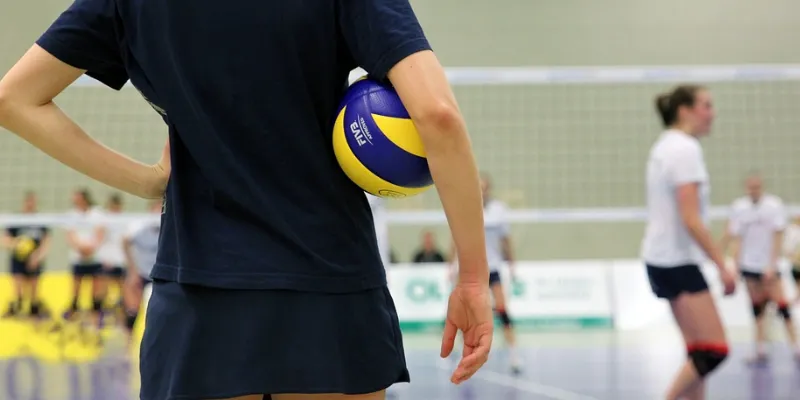Do Swim Caps Keep Hair Dry? How To Keep Hair Dry?

To improve your ability to see while swimming and to reduce water drag, wear a swim cap. This is significant for swimmers who compete because a cap will reduce hydrodynamic drag while swimming. To put it another way, they help you swim faster and more effectively.
So, do swim caps keep hair dry?
Not at all, sadly. Swim caps do not keep your hair dry but to reduce drag and for hygiene reasons. However, silicone caps or wearing two caps together with a silicone one on top do quite well to seal off a lot of water seepage.
For more specific information, keep reading.
Table of Contents
Why Do Swim Caps fail To Keep Hair Completely Dry?
It’s likely that some of you came to this article thinking that swim caps would be your hair’s savior. I’m sorry to burst your bubble, but this is untrue for the following reasons.
Swim Caps Are Not Intended To Be Complete Water Sealants
Contrary to what many people believe, swim caps serve no purpose based on how wet your hair is. Instead, the main purpose of swim caps is to lessen water drag so that the wearer can move faster underwater. Additionally, they help a swimmer’s visibility underwater by removing hair from their face.
Swim caps may act as a physical barrier to help reduce some of the damaging effects that pool chemicals may have on your hair, but this was not the primary objective of swim cap producers. Performance in the pool is their only concern; hairstyles are not important.
You could also contend that a swim cap that is 100 percent waterproof would hinder rather than improve swimming ability.
A swimmer’s scalp would be disproportionately warmer than the rest of their body if chilled water were not allowed to reach it. In addition to the lack of cool water, wearing a swim cap would help keep your head’s heat in check. Approximately 7 to 10% of body heat is lost through the head, so you would definitely notice this additional entrapped heat (source).
Swimmers may become so distracted by their excessive head warmth that they may even start to believe they are overheating. These kinds of interruptions usually do not help swimmers perform well, especially if they feel that their health is in danger.
For further information about overheating in swimmers, click over to How to Explain Why Your Body Feels Hot After Swimming!).
Even if swim cap manufacturers were particularly motivated to create a watertight seal with their creations, it would be virtually impossible to succeed. We’ll talk about the nature of water next because it has a lot to do with many of these issues.
Water Can Seep Into The Tiniest Cracks And Crevasses
Unfortunately, because of the natural characteristics of water, it is almost impossible to keep your hair completely dry while swimming. However tight a seal may appear, water has a way of revealing even the smallest access points.
A swim cap’s ability to completely keep water out would require a technical miracle.
In terms of size and shape, no two swimmers have the same head dimensions. This is the reason a completely waterproof cap would need to be precisely shaped to fit the swimmer’s head. Water will enter if the seal is too loose. The swim cap will be too uncomfortable to wear if it is too tight.
Humans don’t have skin that is completely smooth, so keep that in mind as well. Because of the natural creases and wrinkles present throughout human skin, water can enter the swim cap through a number of different points over time. To stop any potential leaks, the cap would have to literally fasten to the skin.
It goes without saying that such a project would require more resources than it would be worth. Swimmers must accept the fact that their hair will inevitably get wet for these reasons.
Why People Mistakenly Believe Swim Caps Keep Hair Dry?
The fact that swim caps are so snug around the head may be the cause of the misconception that they are waterproof. People frequently believe that swim caps have an airtight seal because of the way they look and feel.
People frequently underestimate water’s capacity for identifying and taking advantage of a seal’s weak spots. Given how much time swimmers spend with their heads underwater during a workout, it has already been established that the fluid state of water is not something to be taken lightly.
It also doesn’t help that certain swim cap products have been marketed as “waterproof” to the public. These so-called “waterproof swim caps” are often meant for activities where an individual’s head is predominantly above water, like water aerobic exercises, for instance.
Since they aren’t submerged underwater in these situations, a person might be able to keep their hair completely dry. Unfortunately, the majority of a swimmer’s workout is spent with their heads submerged.
Consequently, when a swimmer tries on one of these “waterproof swim caps,” they’re shocked to find that they’re not so waterproof after all.
Simply put, please don’t believe any swim cap that says its product will completely keep water out. Instead, you should maintain reasonable expectations and be prepared for wet hair after swimming.
Why Should You Cover Your Head In The Water?
Since it will prevent your hair from getting chlorine burns, keep hair out of your face so you can concentrate on your workout, keep your head warm, keep you safe, and make you swim faster.
Let’s quickly explore these explanations.
Your Hair Will Stay Out Of The Pool If You Wear A Swim Cap
One of the grossest experiences I’ve had in the pool over the years—and it’s happened more times than I care to count—is swimming along and catching a ball of someone else’s hair across my hand and fingers.
It’s gross when loose hair accumulates at the bottom of the pool like tumbleweeds, clogs pool filters, or gets tangled in pool drains.
Everybody loses their hair, including you and I. Keeping our hair from shedding in the pool, a shared space, is the least we can do for our fellow swimmers.
There are swim caps designed specifically for people with long hair and that top bundle of hair.
Swim Caps Help Protect Your Ears (A Little)
Swim caps may seem like an excellent choice for the swimmer who needs to keep water out of their ears. Bingo, right? All you have to do is pull the cap firmly over your ears.
Not so fast, although swimmer ear bands work a little better for this, swim caps can help keep your swimming earplugs in place.
Swim caps have proven to be effective in keeping my earplugs in place rather than completely preventing water from entering the ear canal when it comes to protecting my ears.
Keep Your Hair Out Of Your Face With Swim Caps
You should concentrate on your workout while working out in the water rather than having to wipe your face with a windshield wiper after each length.
Swim caps keep your hair tucked away and out of your eyes so you can see other swimmers better, judge the walls so you can turn with ease, and spend more time swimming rather than removing hair from your face and swim goggles.
A toddler swimming cap can aid in keeping hair out of your child’s face while they are doing activities in the water, in addition to lap swimming, to help them navigate the environment more effectively.
You Can Protect Your Hair From Chlorine By Wearing A Swim Cap
There is a sneaky little way to protect your hair from the harsh (but necessary) chemicals that pools are treated with, even though a swim cap won’t keep it entirely dry.
And this starts by soaking your hair before you get into the water. There is a limit to how much water your hair can hold. If it’s going to get wet, it might as well get wet in the shower with clean water before being wrapped up in a swim cap and entering the pool.
Pre-soaking your hair in clean water reduces the amount of chlorinated water that will seep into your hair while also keeping the pool water cleaner (by removing sweat and extra hair products from your hair).
Ways To Reduce Post-swim Hair Wetness
Once you’ve come to terms with the fact that, after prolonged underwater swimming, your hair will never be completely dry, you can start experimenting with techniques to keep it at least somewhat dry.
Center Your Hair High Up On Your Head
Organizing your hair so that it is in the middle and high up on your head can help to lessen wetness.
Putting your hair up in a high bun is one way to achieve this. This hairdo keeps your hair out of the swim cap’s fringes, where it is most likely to come into contact with water. Once the swim cap is on, you might need to straighten out the bun underneath it so that it lays flat. You should be fine, though, aside from that.
Another option is to have your hair braided and then carefully layered over the top of your head underneath the swim cap. By concentrating the most hair away from the swim cap fringes, where water is likely to pool, this achieves the same fundamental goal.
The main disadvantage of using this technique is that you will require another person to help you braid. You might not have a choice if there isn’t a willing volunteer in the area.
Wear Two Swim Caps
Wearing two swim caps at once is another way to lessen post-swim hair wetness.
The underlying idea behind this technique is that if one swim cap layer is sufficient to reduce hair wetness, why not add another layer on top of that? Even though it’s still not entirely waterproof, placing a second physical barrier between the pool water and your hair ought to have a minimal impact.
But since doubling the swim caps might also double the discomfort, it might take some getting used to. Additionally, it might take some trial and error to determine which two swim caps go together the best.
Wear A Shower Cap Under Your Swim Cap
Wearing a shower cap and a swim cap in addition to two swim caps is an additional way to use the two-layer technique mentioned above.
When I first heard about this technique, I had my doubts about how well it would work. But it seems that this method actually yields better results than the two-swim cap strategy.
Although the shower cap does have a tendency to stick out from the swim cap’s fringes, it is still important to note that it requires some extra effort to tuck it completely underneath. But once this issue is resolved, everything else ought to go without a hitch.

With Wet Or Dry Hair, Do You Put On A Swim Cap?
While getting ready to go swimming, consider a variety of things. What kind of suit should I wear? Do you need to wear sunscreen? And of course, should you put on your swim cap with wet or dry hair?
The latter question probably doesn’t enter your mind all that much if you’re like the majority of people. How much of a difference, after all, can it really make? But as it happens, the response to this query can have a significant influence on your swimming experience. Wet hair can make putting on your cap more difficult and makes it more likely that your hair will escape.
However, dry hair might be more likely to become tangled in the cap. Ultimately, experimenting to see what works best for you is the best way to determine whether to put your swim cap on with wet or dry hair. See more about How To Put On A Swim Cap?
Swim Caps: Hair Damage Potential? What To Do!
We’ve all been told repeatedly that chlorine is bad for our hair and that the pool is full of it. So it stands to reason that using a swim cap should contribute to preventing damage to our hair.
Unfortunately, it’s not that easy. Swim caps can undoubtedly help to lessen chlorine exposure, but they can also be harmful in their own right.
- Most swim caps are too tight, which increases the risk of breakage, and the harsh chemicals used to make them strip away natural oils, leaving hair feeling dry and brittle.
- Additionally, some swim caps contain latex, which can irritate or trigger an allergic reaction.
What is the best method for swimming while protecting your hair? The best defense, according to experts, is using a mild shampoo and conditioner prior to swimming, donning a swim cap, and thoroughly rinsing with clean water after each swim. You can lessen the harm chlorine causes to your hair and help keep it looking gorgeous by following these steps.
Consider using several methods simultaneously if you really want to keep your hair as dry as possible before, during, and after a swim. A high bun tucked between two swim caps, for instance, might help your hair stay even drier.
Overall, there is no surefire solution to the problem of wet hair after swimming. Therefore, adopt a creative strategy!
How To Put On A Swim Cap To Ensure Effective Function?
Putting on a swim cap may seem simple, but there is a right and wrong way to do it:
- Make sure your hair is completely dry before proceeding. The risk of leaks can be increased and the cap’s ability to be put on is hampered by wet hair.
- Select the best kind of cap for your requirements. Use a lined cap or one made of a thinner material if your hair is long or thick.
- Beginning at the forehead, gently pull the cap over your head. The cap may tear if you stretch or tug it too much. Once it’s on, make sure the cap is snugly positioned against your head.
- To ensure a tight seal, tuck any protruding hairs under the cap.
See more about How To Put On A Swim Cap With Long Hair
How To Take Care Of My Swim Cap To Make It Last Longer?
You recently purchased a new swim cap and can’t wait to use it, but you’re not sure how to care for it.
Here are some tips to help you get the most out of your swim cap and make it last longer:
- After each use, always rinse your swim cap with clean water. Sweat and chlorinated water can damage the material; this will help remove them.
- On your swim cap, avoid using harsh cleaners or chemicals. These may degrade the material by removing the coating’s protective layer. Instead, choose a gentle shampoo or soap.
- When not in use, keep your swim cap in a cool, dry place.
It is best to keep the material in a steady environment because it can warp in extremely hot or cold temperatures.
You can help keep your swim cap looking brand-new and extend its lifespan by adhering to these easy instructions.
Swimming Tips For Keeping Your Hair Healthy And Beautiful
Chlorine can be damaging to your hair, as anyone who has ever gone swimming knows. Natural oils in your hair can be stripped away by the chemicals in pool water, leaving it feeling brittle and dry. However, there are a few things you can do to safeguard your locks.
- Before entering the pool, first rinse your hair with clean water. Thus, the effects of chlorine will be lessened.
- Before swimming, use a leave-in conditioner. Your hair will remain moisturized thanks to the barrier that will be created as a result.
- Finally, wash and condition your hair as soon as you get out of the pool. Any remaining chlorine will be removed and your hair’s moisture will be replenished.
By following these easy suggestions, you can maintain gorgeous, healthy hair all summer long.
Conclusion
Dealing with wet hair can be difficult, particularly if it is drenched after a swim. If you haven’t worn a swim cap before, you may be under the impression that this swim accessory may be the solution to your hair wetness problem, but is this actually the truth?
Swim caps are not designed to completely dry hair, so they fail in that endeavor. Swim caps are designed to make swimmers more hydrodynamic and to tame stray hairs. To keep hair from becoming completely drenched, swim caps can be useful.
I appreciate you reading.







